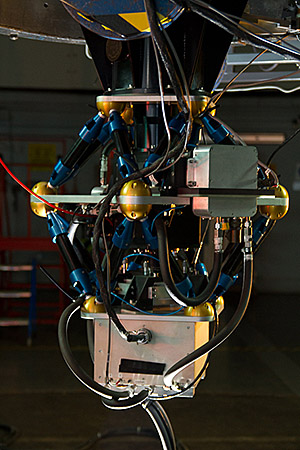ULTRACAM is an ultra-fast, triple-beam CCD camera designed to study
astrophysics on the fastest timescales. The instrument was built by a
consortium involving the Universities of Sheffield (Vik Dhillon), Warwick (Tom Marsh) and the UK
Astronomy Technology Centre, Edinburgh. It saw first light
on the 4.2-m William Herschel Telescope (WHT) on La Palma in 2002, and
first light on the Visitor Focus of the 8.2-m Very Large Telescope
(VLT) in Chile in 2005, becoming both the first instrument to make use
of this VLT focus and the first UK instrument to be used at the VLT.
In 2010, ULTRACAM was also commissioned on the 3.5-m New Technology
Telescope (NTT) in Chile.
The large quantity of observing time awarded
to ULTRACAM (totalling one year of nights over the last decade) on
some of the world's largest telescopes is testament to the
competitiveness of the science performed with the instrument, which
includes the study of white dwarfs, brown dwarfs, pulsars,
black-hole/neutron-star X-ray binaries, gamma-ray bursts, extrasolar
planets, cataclysmic variables, eclipsing binary stars, flare stars,
ultra-compact binaries, asteroseismology and occultations by Solar
System objects. Over 60 refereed publications in major journals have
resulted from the use of ULTRACAM, including two papers in Science and
one in Nature, with many more in preparation. A detailed description
of the instrument is given by Dhillon et al. (2007, MNRAS, 378, 825).
 |
ULTRACAM on the William Herschel Telescope
[ JPEG ]. |
Approximately coinciding with the 10th anniversary of first light with
ULTRACAM on the WHT, Vik Dhillon and Tom Marsh are organising a
Specialist Discussion Meeting on High Time Resolution Astrophysics at
the Royal Astronomical Society on 12 April 2013. Further information
can be found at the meeting website:
http://www.vikdhillon.staff.shef.ac.uk/ras.
More information:



